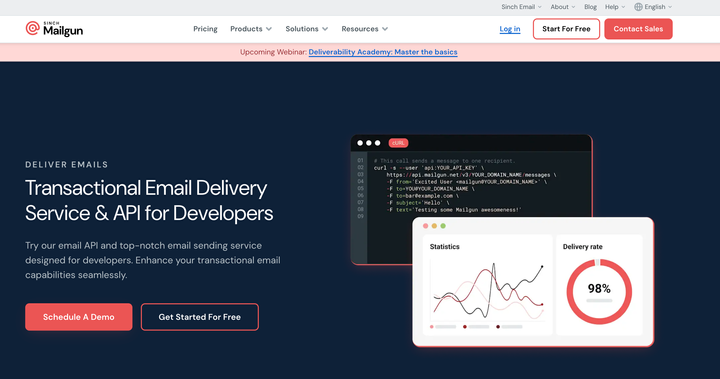Get more with less - Integrate your Software with other Platforms
In today’s fast-paced and highly competitive digital landscape, having powerful and efficient software is crucial for any business or organization. However, with the ever-evolving technology and increasing demand for seamless user experience, simply having a standalone software might not be enough. This is where software integration comes into play. By utilizing third-party platforms and making plugins that seamlessly integrate with your software, you can unlock a whole new level of potential and efficiency. In this blog post, we will discuss the benefits of integrating your software with other platforms and how it can help you get more with less.
Streamline Processes for Improved Productivity
Harnessing the power of software integration involves bridging multiple software systems to perform as a unified entity. The result? An environment where data can freely flow and interact, supercharging your work processes and bolstering productivity. With integration, the need for multiple standalone systems becomes obsolete, allowing your team to channel their focus on tasks that truly matter.
Think about the time and effort saved from juggling various systems and the subsequent reduction in errors due to less manual data entry. Imagine the leap in productivity when duplication of efforts is removed from the equation, and efficiency is the new norm. This isn’t just wishful thinking; it’s the reality brought about by software integration.
By acting as a digital powerhouse, software integration simplifies processes, effectively serving as a catalyst that fuels productivity within your team. It’s like shifting gears in a race car, propelling you ahead with a surge of efficiency and speed. And who doesn’t want that edge in the competitive world of tech? So, embrace the streamlined operations brought about by software integration and witness a notable spike in your team’s productivity. The world of tech waits for no one; it’s time to step up the pace with software integration.
Enhancing Customer Experience through Integration
In the realm of tech, customer satisfaction is a key player in determining the success trajectory of your software. This is where the magic of software integration comes into play. By incorporating your software with other platforms, you can effectively enrich the user experience in ways you never thought possible.
Integration equips your software with a streamlined and cohesive user interface that is easier to navigate and more efficient to operate. Now, your users can utilize your software in sync with their preferred platforms. This kind of convenience slashes the learning curve, making it simpler for your customers to adapt and engage with your software.
But it doesn’t end there. It’s not just about making it easier for your users, it’s about making them feel seen, understood, and valued. With software integration, you are telling your users that you understand their needs and are making every effort to meet them. You are showing them that you respect their time and want to make their experience with your software as seamless as possible.
This level of personalized service can significantly boost customer satisfaction, fostering loyalty, and encouraging referrals. When customers feel valued, they’re more likely to stick around, recommend your software to others, and positively contribute to your software’s overall success.
In the tech world, the customer is king, and with software integration, you can offer them a royal treatment like no other. Let software integration be your vehicle to an enhanced customer experience, one that will set you apart in the ever-competitive tech landscape.
The Role of Plugins in Software Integration
Delving deeper into the nuts and bolts of software integration, let’s highlight an indispensable player – plugins. Often underrated, these small but mighty components are the workhorses behind the scenes, weaving a seamless interaction between your software and other platforms.
Consider plugins as customizable gears in your software machinery. They are mini-programs, designed to perform specific tasks and expand the functionality of your existing software. When skillfully crafted and installed, these plugins enable your software to connect with, exchange data with, and effectively operate alongside other platforms. Essentially, they work like translators, allowing two different software languages to interact and understand each other.
The beauty of plugins lies not just in their ability to bridge the software communication gap, but also in their flexibility. These custom components can be added, updated, or removed with ease to match the evolving needs of your users. This feature of adaptability ensures that your software remains up-to-date and relevant in the fast-paced tech world.
Additionally, plugins also contribute significantly to user experience enhancement. By integrating your software with users’ preferred platforms via plugins, you can offer them the convenience of multitasking within a single, familiar environment. This not only reduces the learning curve but also significantly improves user engagement, adding value to your software.
From boosting software capabilities to enriching user experience, plugins play an integral role in the software integration process. So, while planning your next integration strategy, don’t forget to include these powerhouse components in your toolbox. In the world of software integration, plugins are your secret weapon to achieving a greater degree of connectivity and functionality.
Market Expansion through Integration
Integration of your software with various other platforms is akin to casting a wider net in the vast ocean of the tech industry. The more platforms your software can seamlessly connect with, the greater the number of potential users it can engage. This multiplies your audience reach and establishes a robust presence in the market. In the tech realm, this visibility is crucial.
Your software could be top-notch, equipped with the best features, but if it’s isolated and can’t interact with other platforms, its reach will be limited. Just like a tree in a forest, your software might go unnoticed. But with integration, your software stands out, drawing attention from diverse platform users and paving the way for broader market coverage.
Moreover, integration enables your software to tap into established user bases of popular platforms. These platforms already have a significant number of dedicated users. By integrating with them, you can access these users, effectively expanding your potential customer base. It’s like a VIP pass granting you access to an exclusive, ready-made audience.
Integration also equips your software with the capability to cater to a wider range of user needs. Different platforms serve different purposes and attract different user demographics. By making your software compatible with these varied platforms, you are essentially broadening the spectrum of needs your software can cater to, thereby appealing to a diverse range of users. This diversity can prove pivotal in growing your market footprint.
Imagine being able to provide users of various platforms with a custom solution that works seamlessly with their preferred software. The convenience and familiarity offered by this compatibility can be a potent magnet for new users, causing your user numbers to rise exponentially.
This is the magic of market expansion through integration. It takes your software beyond its natural borders and introduces it to a global audience, opening up a world of opportunities for growth and success. This is not just expansion; it’s a quantum leap towards becoming a dominant player in the tech industry. So why wait? Let software integration be your key to unlocking new markets and soaring to new heights in the tech universe.
Cost Reduction and Increased ROI
Dive into the financial benefits that software integration offers. By unifying multiple systems into a single entity, you’re waving goodbye to the added expenses of maintaining multiple standalone systems. Suddenly, your operational costs shrink, and you find yourself on the friendlier side of your budget.
Let’s not forget the reduction in manual work. With the right software integration, you can automate various tasks, freeing up your staff to focus on more strategic activities. This not only ensures the efficient use of time but also reduces the probability of human error, further saving resources that would otherwise be spent on damage control.
Also, consider this: software integration can serve as your magnifying glass, highlighting the inefficiencies in your current processes. By shining a light on these areas, you can fine-tune your operations, paving the way for more savings and enhanced performance.
And here’s the cherry on top: all these cost reductions can have a positive ripple effect on your return on investment (ROI). With lower operating costs and more efficient processes, you’re set to reap greater returns from your investment.
But don’t stop at merely viewing integration as a cost-cutting tool. See it as a launchpad that can skyrocket your ROI. Remember, integration not only saves you money, but it also equips you with tools to attract a wider audience, enhance customer satisfaction, and improve productivity – all crucial elements that can significantly improve your bottom line.
The interplay between cost reduction and ROI is a dynamic one. As integration cuts down your costs, your ROI is set on an upward trajectory. It’s a virtuous cycle of savings and earnings that can give your financial health a robust boost.
Just think of software integration as the financial superhero of the tech world, swooping in to rescue you from the grips of inflated costs and lackluster returns. This is more than a money-saving strategy; it’s an investment in your software’s future success.
So, take that leap of faith with software integration. Embrace the cost savings, celebrate the increased ROI, and get ready to experience a surge in your software’s financial performance. After all, in the world of tech, who doesn’t want to make more with less?
Improving Data Visibility and Decision Making
In the digital era, data reigns supreme and with software integration, you have the power to exploit it to its fullest potential. Through this process, you create a unified hub where all your data converges, becoming easily accessible and amplifying data visibility. The implications? More robust insights, clearer overviews, and data-driven decision making like you’ve never experienced before.
Consider it akin to having a crystal ball that provides a transparent view into your business operations. This clarity is invaluable. With a comprehensive picture of your business, you can better understand patterns, identify trends, and predict outcomes. This wealth of information empowers you to make confident, informed decisions that could revolutionize your business strategy and propel your software to new heights of success.
In addition, real-time data accessibility through software integration equips you with the ability to stay ahead of the curve. You can not only respond quickly to current market trends but also anticipate future shifts, enabling you to pivot your strategy proactively and keep your software relevant in the fast-paced tech industry.
Remember, knowledge is power, and in the tech world, data is knowledge. So why not harness this power and let it guide your decision-making process? Through improved data visibility and decision-making, software integration offers you a clear path to success in the competitive tech landscape. Make the leap with software integration and turn your data into your greatest asset. It’s time to let your data do the talking!





